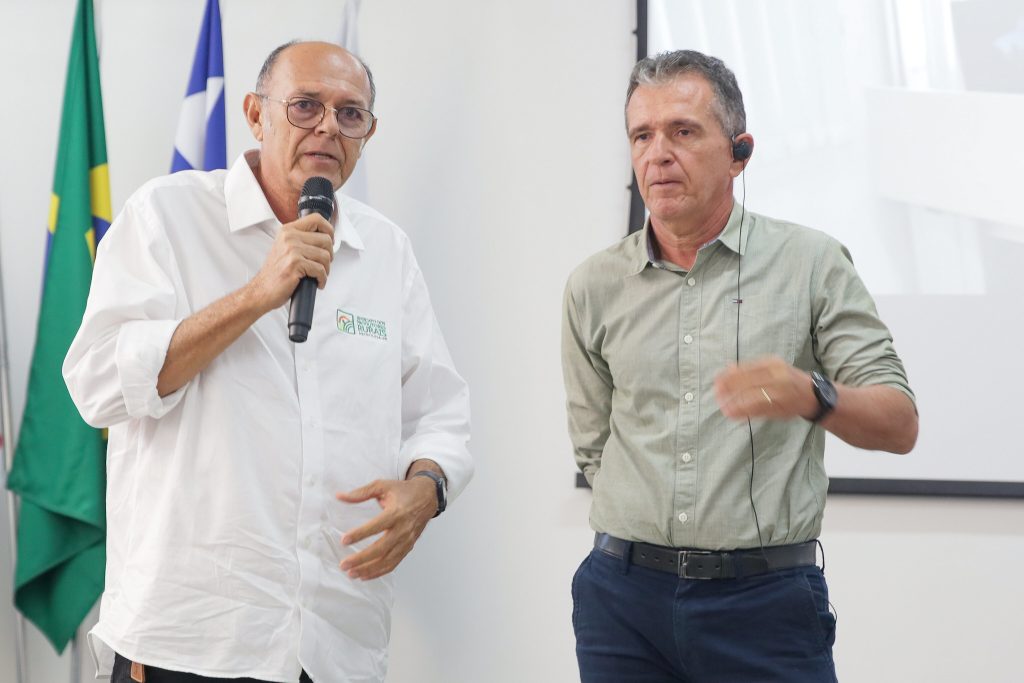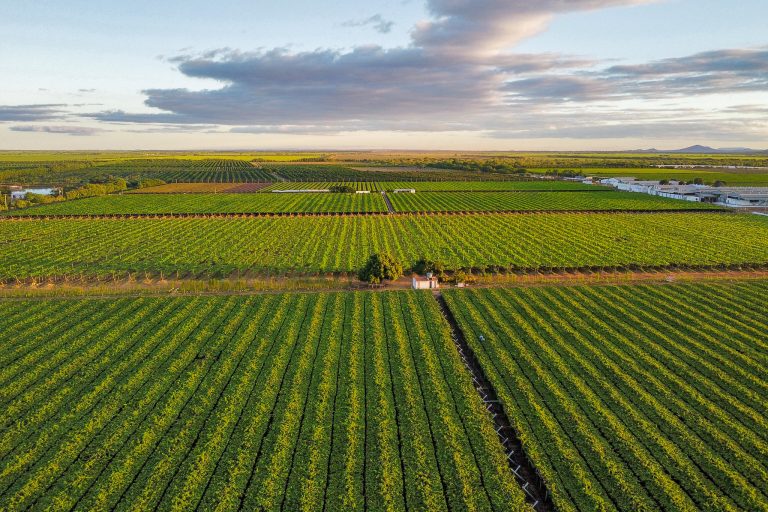Juazeiro – Nonfibrous mango to eat with a spoon and sweet, seedless grapes are the most conspicuous results from investments that have been made in the São Francisco Valley in the Brazilian semi-arid region, a fruit production and export hub for the entire world. Over an area of 35,000 kilometers square, fruits are produced over acres and acres of cultures that aren’t native to that region, which is only made possible by a technological breakthrough that arrived in the ’70s – the river’s water harvesting for irrigation.

This irrigation is a project by the São Francisco and Parnaíba Valley Development Company (Codevasf), a government corporation that found this technology the best way to bring about the region’s agricultural development. That is what allows the water to reach a semi-arid region with low annual rainfall. “If we had to sum up the region’s transformation, it’s based on science and technology, as we’re in an extremely challenging environment,” says Bahia’s Agriculture and Livestock Federation (FAEB) chairman Humberto Miranda.
Water is harvested by pressurization and taken to a main canal that supply a network of secondary canals. The irrigation reaches the plants via dripping. In some cases, the irrigation is done via sprinklers, but this model of water consumption causes more evaporation loss. One of the irrigation districts, Senador Nilo Peçanha, comprehends the cities of Casa Nova, Bahia state, and Petrolina, Pernambuco state, in the lower middle region of the São Francisco River. It irrigates a total area of 18,600 hectares starting from Lago de Sobradinho.
Mangoes and grapes
Starting in the 70s, investors and entrepreneurs from Brazil’s northeast, south and southeast regions and even from Japan started banking mostly on two fruit crops that otherwise don’t belong to this landscape – mangoes and grapes thrive in an environment surrounded by cacti, bromelias, umbu trees, carnaubas, and other native species of the caatinga.

The region known as the São Francisco Valley comprises four municipalities in Pernambuco state – Santa Maria da Boa Vista, Lagoa Grande, Orocó, and Petrolina – and four in Bahia – Juazeiro, Casa Nova, Sobradinho, and Curaçá. These are just two of the five Brazilian states where the São Francisco River goes through. It rises in Minas Gerais and falls on the Atlantic Ocean between Sergipe and Alagoas.
According to data from the National Confederation of Agriculture (CNA), in 2022 municipalities Juazeiro and Petrolina produced approximately 600,000 tonnes of mangoes and 300,000 tonnes of grapes, particularly table grape, although the semi-arid region also grows wine grapes.
Read more:
From Japan to UAE, via Brazil’s Sertão
Bronzed mangoes to suit taste of consumers
The new frontier of Miolo in northeast Brazil
Fruits: Brazil grows many but exports few
Ninety percent of these mangoes and 98% of these grapes are exported. In both cases, genetic improvements developed by the United States resulted in sweeter cultivars with traits that please consumers like Tommy, Kent, Keitt and Palmer mangoes, and Vitória grapes. Mangoes and grapes are prevalent in the region, farmers say, because they adapted better, but there are also lime, pear, watermelon, guava and other crops. Forty percent of the total planted area in the São Francisco Valley grows mangoes, 20% table grapes, and 40% other crops.
From the São Francisco River to the UAE
Exporting comes after a long productive process that was only made possible by harvesting the river’s water to irrigate the semi-arid region. And the results are bountiful: 95% of the exports are shipped by sea from ports in Salvador, Bahia state, and Pecém, Ceará state. The remaining 5% are dispatched by air mostly via airports in Campinas and Guarulhos, São Paulo state. This is the leading route taking fruits from the São Francisco Valley to Arab countries.

The leading client of grapes and particularly mangoes in the Middle East and North Africa is currently the United Arab Emirates – according to CNA, in 2023 Brazil exported USD 572,100 worth of fresh mangoes to the UAE, of which USD 317,400 came from Bahia and Pernambuco states. Fresh grape exports from Brazil to the Arab countries added up to USD 672,300, with USD 150,9000 coming from these states.
Air is the leading shipping method to the Arab countries, as the maritime route takes approximately 40 days, which impacts the quality of the fruit. There are also indirect exports via trading posts like the Port of Rotterdam in the Netherlands. Egypt is also a market receiving Brazilian fruits but in smaller amount.
“Sometimes a cargo plane from São Paulo lands here. When this happens, we can ship fruits from Petrolina, but that’s not the rule,” said Petrolina’s Farmers Union president Jailson Lira.
The journalist traveled by the invitation of CNA
Translated by Guilherme Miranda




